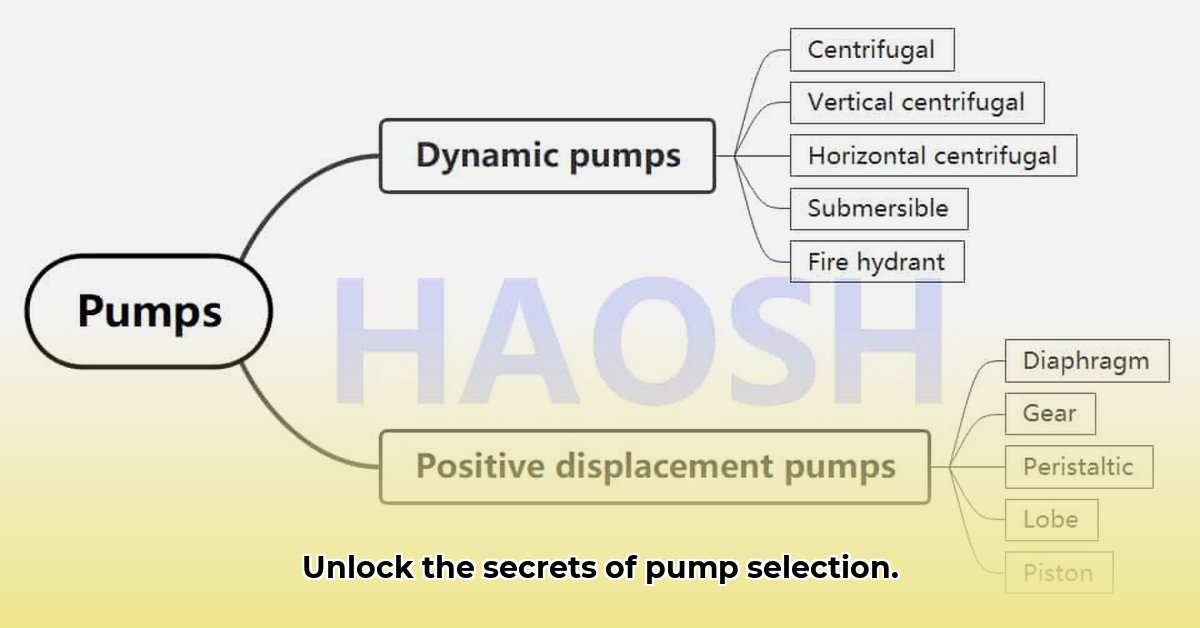Decoding Pump Fundamentals: Dynamic vs. Positive Displacement
Effective fluid transfer hinges on selecting the right pump. Whether you’re moving large volumes of water at low pressure or smaller amounts of viscous liquid at high pressure, understanding the core difference between dynamic and positive displacement pumps is paramount. Dynamic pumps, such as centrifugal pumps, accelerate fluid velocity to generate flow. Conversely, positive displacement pumps capture a fixed fluid volume and propel it through the system. This fundamental distinction dictates pump suitability for specific applications. Choosing the correct type is the first critical step in optimizing your fluid handling system.
Dynamic Pumps: The Centrifugal Advantage
Centrifugal pumps are ubiquitous across industries due to their robust design, simplicity, and high flow rate capabilities. They are the preferred choice for applications demanding high-volume, low-pressure fluid transfer, such as municipal water systems, HVAC, and irrigation. However, their efficiency decreases with highly viscous fluids or when high pressure is required. Understanding impeller design (radial, mixed-flow, or axial) and material compatibility is essential for effective centrifugal pump selection and maximizing operational lifespan.
Positive Displacement Pumps: Precision and Power
When precision, high pressure, or handling viscous or shear-sensitive fluids is critical, positive displacement pumps (PDPs) take center stage. The PDP family includes diverse pump types, each tailored to specific needs. Diaphragm pumps handle corrosive or abrasive liquids with ease. Gear pumps efficiently move thick oils and lubricants. Peristaltic pumps gently transfer delicate materials like pharmaceuticals and food products. Lobe pumps manage slurries and wastewater. Piston pumps generate exceptional pressure for demanding applications like hydraulic systems. Navigating this variety requires a thorough understanding of your application’s unique demands.
Selecting the Perfect Pump: A Strategic Approach
Choosing the optimal pump demands a systematic evaluation. Begin by characterizing your fluid: viscosity, corrosiveness, abrasiveness, and the presence and nature of any solids. Next, define operational parameters: required flow rate, pressure, duty cycle, and environmental conditions (temperature, humidity, etc.). Consider long-term factors such as maintenance requirements, material compatibility, and whole-life cost. Integrating these elements ensures a well-informed decision that maximizes efficiency and minimizes potential issues.
In-Depth Analysis: Pump Types and Applications
Centrifugal Pumps: Powering Essential Processes
Centrifugal pumps are indispensable in water supply, industrial processes, and HVAC systems. Impeller design (radial, axial, or mixed-flow) directly impacts pump performance characteristics. Single-stage pumps excel in high-flow, low-pressure applications. Multi-stage pumps generate higher pressures for demanding tasks. Material selection is crucial for longevity, particularly when handling corrosive or abrasive fluids. Regular maintenance, including inspections, lubrication, and vibration monitoring, is essential for preventing costly downtime and maximizing operational life.
Positive Displacement Pumps: Handling Demanding Fluids
Positive displacement pumps are expertly designed to handle high-viscosity fluids and delicate applications. Reciprocating pumps, including piston and diaphragm types, produce high pressure but necessitate more frequent maintenance. Rotary pumps, including gear and lobe pumps, deliver high flow rates suitable for viscous fluids. Peristaltic pumps offer gentle, contamination-free transfer for shear-sensitive materials. Meticulous consideration of viscosity, pressure, flow rate, material compatibility, and cleaning procedures is essential for successful implementation.
Conquering High-Viscosity Fluids with Suspended Solids
Pumping high-viscosity fluids containing suspended solids presents unique challenges. Positive displacement pumps, such as gear, lobe, progressive cavity, peristaltic, and diaphragm pumps, generally outperform centrifugal pumps in these demanding situations. Selecting the best pump type requires evaluating viscosity, shear sensitivity, abrasiveness, solids concentration, required flow rate, and pressure. Material compatibility and wear resistance are critical to minimize corrosion, erosion, and degradation. Understanding particle size and distribution is also essential for optimizing pump performance and preventing clogging or damage. Implementing robust maintenance procedures, including regular inspections and cleaning, ensures long-term operational efficiency and minimizes downtime.
Optimizing Pump Performance: A Forward-Looking Approach
Selecting the correct pump requires a holistic evaluation of your fluid properties, operational needs, and long-term considerations encompassing maintenance, material compatibility, and life-cycle cost. By adopting a systematic approach, understanding the strengths and weaknesses of each pump type, and considering future needs, you can confidently select a pump that optimizes performance, minimizes downtime, and maximizes your investment. Emerging technologies, such as smart pumps with integrated sensors and advanced control systems, promise to further enhance efficiency, reliability, and predictive maintenance capabilities in the future of fluid handling.
- Mastering Leader in Spanish: The Complete Guide - April 19, 2025
- Uncovering Surprising Parallels: England Size Compared to US States - April 19, 2025
- Old Mexico Map: Border Shifts 1821-1857 - April 19, 2025
















